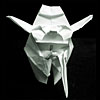Experience or don’t experience. There is no try.
“It’s strange, then, that in modern English the two words, “experience” and “try”, have such different meanings: when we try something we tend to take a sip or a nibble, get our toes wet, or go for a test drive around the block. But when we experience something, we allow it to overtake and engulf us, we admit it fully into our spaces, our lives. A deeper and more lasting understanding is achieved, something fundamentally different than what we get from merely trying something.
The purpose of user experience design, or UXD, is to understand that user behavior can be seen as part of a holistic experiential model instead of as a shallow, temporary hit-and-run encounter. In the domain of user experience, then, we must not mistake trying something for experiencing it.
The most revolutionary products, the things you “never knew you wanted but can’t live without”, only catch on when people are able to move quickly from trying to experiencing.”
This leads to some interesting ramifications.





[…] Chris Fahey, cofondatore di Behavior, azienda di consulenza di design d’interazione, discute all’interno del suo blog GraphPaper, sull’evoluzione del significato attribuito alla parola “esperienza”. In latino, infatti, “experiri” significava “provare”, mentre nella connotazione attuale indica un più vasto e completo coinvolgimento della persona. […]